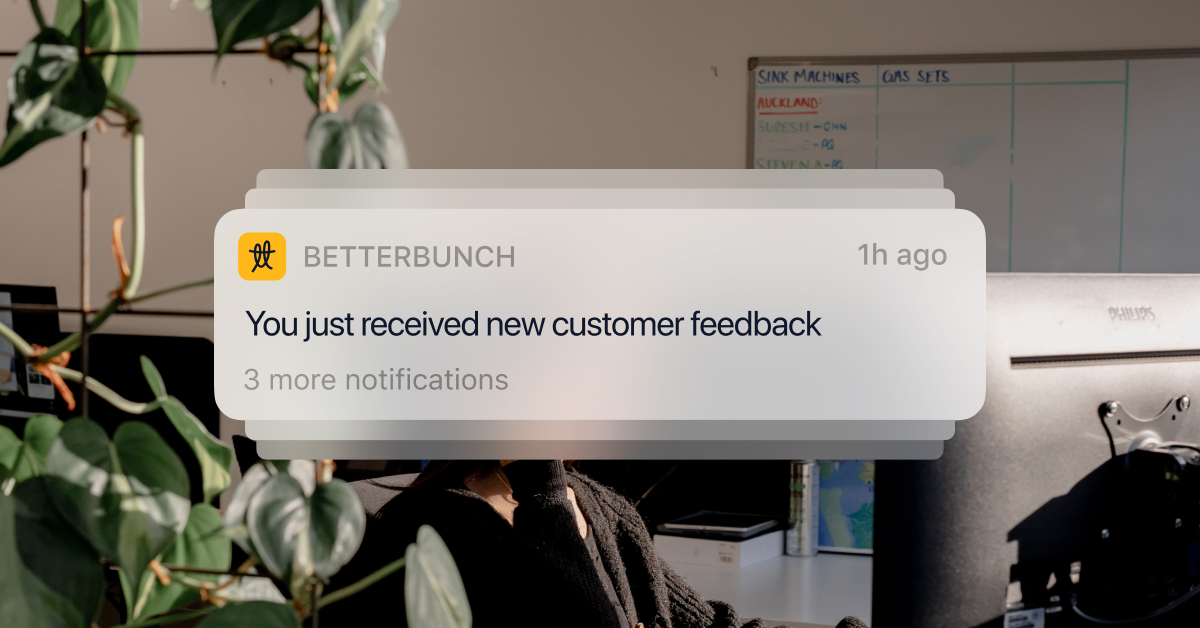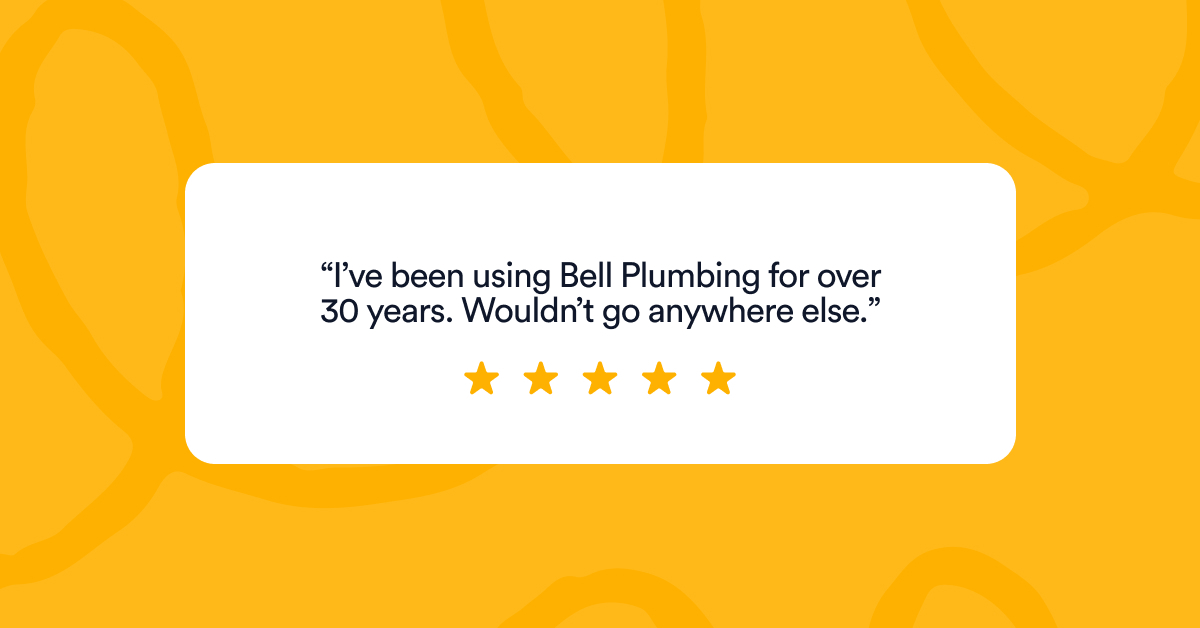Customer feedback is a valuable tool that can guide your business towards improvement and long-lasting success.
No matter what line of work you're in—whether it be the trades, professional services, or hospitality industry—effectively managing feedback can make a significant difference in customer satisfaction, growth and your bottom line.
In this article, we'll explore the key dos and don'ts of feedback management, highlighting best practices and common mistakes to help you navigate this vital piece of the business puzzle.
The do's of customer feedback management
Do: Embrace constructive criticism
Whether you agree with a customer's recount of a situation—or not!—you must always approach every piece of negative feedback with a "what can I learn from this" hat on.
It's true that some customers simply wake up on the wrong side of the bed, and there may be very little you can do to prevent the complaint. But, there is something to learn from every customer interaction, so don't be too quick to simply apologise and close the case.
Tip: Ask yourself, is there a problem with our service or the customers' expectations? Could I have provided more detail before the service to prevent the customer's dissatisfaction, or do I need to keep an eye on the root cause of the complaint and consider changing our processes to prevent it from happening again?
Do: Cast a wide net for feedback
Asking for feedback from your biggest fans is great for team morale, but you'll miss out on the opportunity to identify mistakes—and learn from them.
Similarly, asking for feedback from repeat customers won’t help you spot issues with your onboarding process, and feedback from new customers won’t help you determine if your recent system upgrade was a huge success or a flop in your customers' opinions.
You should ask for regular feedback from all customer groups to ensure a diverse and unbiased pool of data you can learn from. This approach will serve comprehensive views of your strengths and weaknesses on a silver platter.
Do: Shout your positive feedback from the rooftops
Grab your megaphone and share that positive feedback everywhere it counts!
Use positive feedback to motivate your team, ask happy customers to share their great experiences on your Google Business Profile and introduce customer testimonials to your next marketing campaign to build trust and new business.
Check out this article for inspiration to supercharge your marketing with reviews.
Do: Record and monitor negative feedback
Approach negative feedback as an opportunity to learn and grow.
Keep a record of negative comments and dedicate regular time to review them. Identify recurring issues and trends, and address the root causes to enhance your customer experiences.
Do: Record and monitor positive feedback, too!
Positive feedback doesn't just boost morale—it also contains gold nuggets of insight and opportunity.
In the same way that you'll document and learn from negative feedback, keep a record of the things your customers rave about, and start doing more of it!
If you’re an air conditioning contractor and get regular feedback on the awesome “how to clean your heat pump” card you leave after a service, consider making one for “how to update your heat transfer system with the change of seasons” too.
Whether it's promptness, professionalism, or a personalised touch, use this knowledge to reinforce your strengths.
Do: Reply to every piece of feedback
If a customer has taken time to share insight into their experience, it’s important to acknowledge their efforts by responding to all feedback, regardless of the tone.
Responding to positive feedback shows appreciation while addressing negative feedback showcases your dedication to resolving issues.
Check out our guides for tips and inspiration for the next time you respond to positive feedback or how to handle negative feedback.
Do: Close the feedback loop
Whether the feedback concerns your accounting firm giving the best tax advice in town or the handyman who arrived at 8.04 when they said they’d be there at 8 am, it’s important to close the feedback loop by expressing your eagerness to serve the customer again.
This gesture demonstrates your loyalty, commitment to improvement and customer satisfaction.
The don'ts of customer feedback management
Don't: Compromise customer privacy
While it may be tempting, it’s important to avoid sharing private customer information in public forums like Google reviews. Respect privacy and confidentiality to maintain your customers' trust in your professionalism.
It's never a good look when a customer leaves a complaint and the service provider responds with a torrent of accusatory details about the customer. While it would be nice to reply to “the double-glazing doesn’t reduce street noise like the glass installer said it would” with “well, you live on the corner of Queen Street and Karangahape Road—I’m not a magician!”, this inappropriately shares private and sensitive information about the customer.
Make a rule of being courteous, polite, and show as much empathy as possible in your responses.
Don't: Point the finger and blame your staff
When negative feedback crops up, don’t shift blame onto a new team member or other staff. It’s important management takes responsibility even if you weren’t the rude plumber who didn't take his boots off. This approach fosters accountability within your team and demonstrates your commitment to rectifying issues with a customer.
Instead, consider an apology and highlighting the new training you’ve introduced to ensure this won’t happen on their next visit to your tyre shop.
Don't: Underestimate emotional intelligence
While it might be clear a customer is making a mountain out of a molehill, it’s important to handle all feedback with emotional intelligence. Empathise with the customer's perspective, even if you disagree.
This will help you respond tactfully and increase your chances of turning a momentarily unhappy customer into a loyal fan.
Don't: Assume; instead, seek clarity
When feedback lacks context and details, don't fill in the blanks by making assumptions. Reach out to the customer for more information so that they can help you understand their perspective and the facts.
This proactive approach enables you to take meaningful action.
Don't: Make unrealistic promises
When you’re addressing feedback, avoid making promises you can't keep. Overpromising and underdelivering will only set your customer up for another disappointing service experience.
Instead, communicate your commitment to addressing problems while being transparent about what changes you can realistically implement.
Don’t: Ask for feedback once, and never again
Make an effort to build a business culture that is focused on constant feedback, improvement and growth. Asking for feedback from customers this month and then again next winter is better than not asking at all, but it's not the best approach.
Take a look at this article that talks about the importance of asking for customer feedback regularly.
By implementing a constant feedback process where every customer is followed up with post-service, a business can stay ahead of the competition, optimise services, strengthen customer satisfaction and keep customers coming back for more.
Software platforms like betterbunch can help with this. Check out how it works here.
Key takeaways
- Approach all feedback as constructive, welcoming both positive and negative comments.
- Request feedback from a diverse range of customers to gather unbiased data.
- Share positive feedback with staff and online to boost morale, motivation and marketing efforts.
- Record and review negative feedback to identify trends and areas for improvement.
- Extract insights from positive feedback to reinforce strengths and enhance services.
- Close the feedback loop by expressing eagerness to serve customers again.
- Reply to all feedback, acknowledging appreciation for positive comments and addressing concerns in negative feedback.
- Don't compromise customer privacy by sharing private information publicly.
- Avoid blaming staff when addressing negative feedback; take responsibility instead.
- Don't neglect positive feedback; celebrate successes and show genuine appreciation.
- Employ emotional intelligence when dealing with negative feedback to maintain a positive customer experience.
- Seek clarity and avoid assumptions by asking for more details when feedback lacks context.
- Refrain from making unrealistic promises; communicate your commitment to addressing concerns realistically.
- Don’t ask once. Set up a feedback system like betterbunch that allows you to learn from customer feedback regularly.
In summary
Effective feedback management shapes success.
By implementing a regular feedback process and keeping the do’s and don’ts of feedback management front of mind, businesses are empowered to learn, grow, attract new business and build a loud and loyal customer base.



